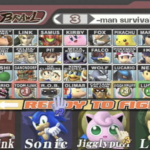When Elden Ring was released at the end of February, it took the gaming world by storm. It became one of the most critically acclaimed games ever released, and sold over 13 million copies a month after its release. Not since The Legend of Zelda: Breath of the Wild has a game seemed so unanimously praised.
But while early reviews and initial reception were historically positive, the sheer size and amount of content in the game meant the broader picture of the game would take some time to reveal itself. With the honeymoon phase of Elden Ring come and gone, how does it hold up now?
Elden Ring Review Months Later (**Potential Spoilers Ahead**)
Elden Ring is without question one of the best open world games ever made, and its contributions to improve the genre, as well as gaming as a whole, are vast and deep. FromSoftware recognized that Breath of the Wild nailed the sense of freedom and exploration with their open world design, as well as the sense of reward for curiosity. The difference is that Elden Ring provides many more secrets and rewards, and with much greater variety.
From the very beginning, you are given total freedom to explore wherever you want to in The Lands Between, with only very vague directions of where the next major story point is. Core mechanics, such as the player’s horse companion as well as access to the NPC hub the Roundtable Hold, are presented to the player almost immediately. After that, it’s completely up to the player what happens next.
The story of Elden Ring is still, in FromSoftware tradition, told in a non-linear way, although there is more exposition revealed to the player than previous Souls games. Finer details of character origins and lore behind the world will require the player to do some thorough digging, but the game presents the major characters, goals and plot points fairly clearly.
It’s important to say that the gameplay is still very much Dark Souls; while the open-world formula allows players to tackle everything at their own pace, as well as the much-appreciated benefit of being able to just leave a dungeon or area that’s too difficult for later, the core gameplay is the traditional Souls formula. If that appeals to you, or if you’ve been curious to try but the games’ notorious reputation for difficulty has scared you, then the game is more than worth it. If you don’t care for Souls gameplay, then this will just be a much larger version of something you already dislike.
The massive world of Elden Ring is one of its greatest achievements, while also bearing some of its more notable flaws. There are some truly stunning locations, and the world is populated with countless dungeons, ruins, castles, encampments and more that breathe life into every setting. While the main map of Elden Ring would put most open world games to shame, there is also an entire subterranean world with multiple areas, each with their own distinct art style and characteristics.
In terms of enemy variety, Elden Ring provides players with many different foes to go up against. The sheer volume of bosses and enemies alone would be impressive, but Elden Ring also places them very appropriately; the rotting landscape of Caelid features enemies who look as if they are decomposing, while the area around Stormveil Castle is filled with soldiers and guard dogs. Some enemies will be immediately hostile, while others may pay you no mind until you’ve provoked them. For a world with so much variety in setting and style, all the enemies felt appropriately placed.
The bosses in Elden Ring are numerous and all test different aspects of your play. There are bosses that will force you to learn how to parry, or to stop panic dodge rolling or to stay aggressive, and more. The first story boss, Margit, requires a solid understanding of the basics of Elden Ring, as well as serving as a not-so-gentle nudge to go explore the world; players who fight him immediately after starting the game will be in for a quality ass whooping. While some of the later bosses seem to have a bit more of an RNG element (in terms of which moves they may or may not use deciding how difficult or doable a fight is,) the major bosses in Elden Ring are unique, creative and some can find themselves ranked among the best in the Souls series.
It is the fact that so much of the massive world of Elden Ring is so beautifully constructed and carefully polished that some of the side content seems to detract from the experience rather than add to it. Caves and catacombs will tend to reuse certain assets, and the later parts of the game recycle more and more enemy types but slide the health and damage scale to make them more difficult, or maybe add one new ability. Some bosses at the end of a dungeon become “fight these two separate bosses from previous dungeons, but at the same time now.”
While it’s unfair to suggest that they should have completely new layouts, enemies and bosses for every minor to medium sized dungeon (the game already has far more variety than other open world adventure games,) the need to fill every corner with some type of content leads to an oversaturation that brings diminishing returns late in the game. The first 40 hours of Elden Ring bring a constantly improving sense of exploration and accomplishment; uncovering each secret drives players to the next, and the areas of Stormveil Castle, Raya Lucaria Academy and Leyndell Capital get continuously more impressive and awe-inspiring. The last stretch of the game, aside from the unique and incredible main boss fights, features a difficulty spike with lots of reused enemy types; it becomes a slog, and players may find themselves wanting to speed by each area to try and get to the next checkpoint instead of fighting their way through as they did in previous sections. This is unfortunate, because the major areas in the latter part of the game are just as outstanding from an artistic perspective as the areas before; however, it’s tough to appreciate them when the fights in these areas are more of a chore than engaging.
On the topic of difficulty, Elden Ring still has that infamous Souls difficulty to it, but the open world makes it much accessible to newer players, as well as the wide variety of builds for your character, and the ability to summon ashes that fight alongside the player. There are plenty of tools to deal with the typical frustration of getting stuck in a Souls game, and at one point the player can unlock the ability to respec their character, if they feel like trying a new build or strategy. The difficulty spike late in the game led to many builds being obsolete, with only a few viable or broken builds being available to deal with the much harder bosses. However, patches have since made it easier to deal with any challenges the way the player wants to. The wide variety of starting classes, weapons, armors, spells and other items give players a ton of freedom to shape their characters’ abilities exactly to their liking.
Four months since its release, it’s clear that the initial hype around Elden Ring is almost entirely justified, despite the flaws. The game builds on Breath of the Wild’s curiosity for exploration by providing more variety with greater depth to reward players for looking at every corner of the world map. It frees the Souls genre from a revered but niche genre to a more accessible style of game that more players can find enjoyment with. The grand scope of the game may have led to some oversaturation and difficulties with proper balance (some of the later side content didn’t maintain that sense of reward for exploration that carried through a large portion of the game) but it’s clear that the hysteria on launch wasn’t overblown, and that a new bar has been set. Elden Ring is not a perfect game, but it’s as good and important as any landmark video game in history.








